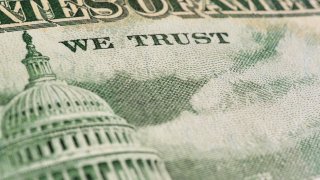The Federal Reserve Will Cut Interest Rates. But Can a Recession Be Avoided?
Powell’s decision to cut interest rates should be welcomed, but we should not delude ourselves into thinking that a snail’s pace cut will be nearly enough to avert a recession.
If there is one thing we know about monetary policy, it is that its effects are not often felt until after long and variable lags. In general, it takes between twelve and eighteen months for interest rate changes, whether up or down, to have their full effect on the economy.
This makes it all too likely that Jerome Powell’s belated conversion today at Jackson Hole to the idea of the need for interest rate cuts will have come too late to avoid a recession. This would appear to be especially the case if any of the numerous downside risks to an already weakening economy were to materialize. It would also appear to be the case if the Fed were to cut interest rates at the snail’s pace of twenty-five basis points at each meeting rather than at the fifty basis points by which it raised interest rates to regain inflation control.
Mr. Powell’s conversion to the need for interest rate cuts should have come as no surprise, considering the considerable progress that has been made in reducing inflation and the many signs of a weakening U.S. economy. After all, these are precisely the conditions that, over the past year, Mr. Powell has indicated would be needed for the Fed to change interest rate policy course.
For July, the Bureau of Labor Statistics (BLS) reported that for the first time in three years, the consumer price index dropped to below 3 percent. That is a far cry from inflation’s June 2022 peak of 9.1 percent and well on its way to the Federal Reserve’s 2 percent inflation target.
Meanwhile, a weakening U.S. economy must also assure Mr. Powell that the progress being made to date in reducing inflation will be sustained. In July, the unemployment rate jumped to 4.3 percent, or its highest level since October 2021, while this week, the BLS reported that over the past year, the economy added 800,000 fewer jobs than had initially been reported. In addition to these clear signs of a softening labor market, manufacturing output continues to slump while one company after another is reporting that the American consumer appears to be tapped out and to have run through their COVID-19 relief payment checks.
As if a slowing economy were not sufficient reason for adopting an aggressive interest rate-cutting cycle, there are a host of downside economic risks both at home and abroad that, if realized, could shock the U.S. and world economies.
Starting at home, the presidential election suggests that our budget deficit problem will not be addressed any time soon, and our trade policy could move to a highly protectionist stance, especially if Donald Trump wins the election. At the same time, the slow-motion train wreck in the commercial real estate space threatens to trigger another round of the regional bank crisis.
Abroad, we have an ongoing Israel-Hamas war that threatens to spread to the rest of the Middle East and could cause oil supply disruptions, especially if Iran becomes more actively engaged in that conflict. At the same time, China, the world’s second-largest economy, is at risk of continuing to slow down as it grapples with the bursting of its epic-sized housing and credit market bubble.
All of this is to say that we should welcome Jerome Powell’s announcement today that the Fed is soon likely to start its interest rate-cutting cycle. However, we should not delude ourselves into thinking that a snail’s pace cut in interest rates will be nearly enough to avert a recession. For us to have a fighting chance of avoiding a recession, the Fed will need to be as aggressive in cutting interest rates as it was in hiking interest rates over the past two years to regain inflation control.
About the Author: Desmond Lachman
Desmond Lachman is a senior fellow at the American Enterprise Institute, a deputy director in the International Monetary Fund’s Policy Development and Review Department, and the chief emerging-market economic strategist at Salomon Smith Barney.
Image: Shutterstock.


